
Something remarkable happened at the beginning of the 20th Century. Semi-automatic magazine-fed handguns were still a fairly novel concept, but new designs were popping up constantly. This was the era that gave us such novel designs as the iconic American M1911, the German Luger, and Japanese Nambu. While some these designs would echo throughout the ages, others would be left behind, all but forgotten. One of those novel, virtually forgotten designs, born in the prohibition era of the United States was the Remington Model 51.
John Moses Browning may be the most famous firearms designer of the era, but, at least in his own estimation, a man named John Pedersen was more deserving of that honor. Though he collaborated with other designers (including Browning himself) on a series of successful guns, the Remington Model 51 is possibly Pedersen’s most successful design to reach full production.
Pedersen designed the handgun in 1917 for Remington which was looking to introduce a semi-automatic pocket gun to the United States, a market that was dominated by less expensive and more reliable revolvers. The result was at least somewhat commercially successful. Remington produced over 65,000 units. The U.S. military even took a look at the Model 51 as a combat handgun design before the outbreak of World War II. But with the introduction of cheaper and more reliable direct blowback designs, Model 51 production eventually wound down.
Like most designs of the time the Model 51 is sleek and streamlined. Since it was conceived as a pocket pistol the exterior was worked to be as smooth and snag-free as possible making the gun very comfortable in the hand. It sports a set of notch and post sights that have been drastically lowered to keep them from snagging on the owner’s pocket, to the point that they are basically nonexistent. To Pedersen, that wasn’t an issue. In his mind the gun was so ergonomic it was “self aiming.”
The gun’s ergonomics are enhanced by the way the safety works. There’s a frame-mounted safety on the side of the gun that’s annoyingly difficult to engage and disengage in a hurry. Pedersen, though, also included a grip safety similar the one Browning had on his 1911.
It was a design feature present on other self defense revolvers like the Smith & Wesson Safety Hamerless that had been on the market for decades. The Model 51’s safety, which comprises the entire back strap of the pistol, rests comfortably in the hand with no sharp edges. When depressed, it lines up smoothly with the rear edges of the grip.
Speaking of the grip, the Model 51 uses a smooth single stack magazine, again like the M1911 before it. The original 51 held seven rounds of .380 ACP ammunition in its comfortable grip. The slim magazine creates an extremely thin handgun, something that revolvers of the era couldn’t match for bulk and concealability. Also borrowed from the M1911 design was the mag release mechanism located on the left hand side of the grip. Bakelite panels attached to either side of the finish the look.
While the external design of the firearm is quite good, the internal components are what really sets this firearm apart. Instead of using a barrel-based short-stroke recoil system like most handgun of the time, Pedersen’s novel design kept the barrel fixed. The breech itself tilts to impart the momentum needed to carry the slide through the operating cycle. You can see a video of it in action here.
This novel operating mechanism makes taking down the gun for cleaning a, well, interesting experience. You need to remove a crossbar pin to unlock the barrel. The user then grips the end of the barrel and pulls it forward to unlock the mechanism and remove the slide. Thankfully, the barrel is grooved for this purpose, making it easy to grasp. From there, the internal mechanism can be removed by sliding it back and tilting it out, which allows the firing pin and the spring to fall free.
At first glance this might seem more complicated than necessary, but it enables a series of really innovative features.
Since the barrel doesn’t tilt, there’s no need for a separate guide rod for the return spring. Most semi-automatic handguns of the era used an under-over placement for the return spring that provided the forward pressure to chamber the next round. This increases the height of the handgun, and makes it a little harder to conceal in a pocket or holster.
By placing the recoil spring around the barrel the gun could be much thinner with an extremely low bore axis…an edge over the competition. It’s a definite advantage when it comes to concealed carry.
The second advantage: felt recoil. For a look at why that low bore axis is such a good thing, check out this article. In short, the original Model 51’s lower bore axis reduces felt recoil, making it softer shooting and allowing for quicker follow-up shots.
There’s no doubt that this is a slick design, but the real question is how well it performs on the range.
This Remington Model 51 is chambered in the more powerful (for the time) .380 ACP cartridge instead of the .32 ACP cartridge so many of its pocketable competition used. Again, the recoil is incredibly tame. It feels like you’re shooting a rimfire cartridge than the centerfire .380 ACP.
There’s a tiny bit of take-up in the trigger. After that, the break is crisp and clean. Once cycled, a short reset gets you back in firing condition. Something noteable in this design: there’s a tactile reset. You feel and hear a small “click” when the trigger is back in firing position. That removes all doubt about whether you need to release the trigger any further and discourages “short stroking” (where the shooter will try to pull the trigger again without fully resetting the gun).
Accuracy for this 90-year-old firearm, one that’s seen plenty of use, is surprisingly good. At the standard 15 yards I was grouping my shots in a roughly two inch square, which is combat effective for the majority of threats you’ll encounter in the real world. Pedersen may have been over-selling a little bit when he declared the gun “self aiming” but the original Model 51’s ergonomics make for excellent accuracy.
The Remington Model 51 may have been lost to history but for the efforts of a couple of Remington employees. Remington redesigned the firearm for the modern world and re-released it a couple years ago, with an updated model recently released. A review of that gun will follow soon.
Specifications: Remington Model 51
Caliber: .380 ACP
Operation: Pedersen Action
Magazine: 7 rounds
Street Price: $500
Ratings (out of five stars):
Fit, Finish, Build Quality * * * *
This particular gun definitely isn’t the best example of a Remington Model 51 out there, but even here the build quality is evident. This gun has been ridden hard and put away wet, but the action is still butter smooth and the trigger is crisp and clean. The machining on the parts keeps everything fitting tightly.
Accuracy * * * *
For a pocket pistol with tiny sights the gun isn’t half bad. Two inches at 15 yards is nothing to sneeze at in the compact handgun world, even among modern firearms.
Function * * * * *
Works every single time. The action is smooth and the recoil is light.
Customize This –
It’s been about 80 years since there has been a need for aftermarket options. You can get some replacement parts but that’s about it.
Overall * * * *
I have a soft spot in my heart for old and interesting guns. The original Model 51 fits both categories. The gun is a work of mechanical art. The inner workings of the handgun are fascinating, and their impact on the size and function of the firearm are definitely beneficial. It’s a shame that direct blowback guns like the Walther PPK swooped in not too long afterward to capture the pocket gun market. I would love to see what this gun could have been in a .45 ACP configuration.

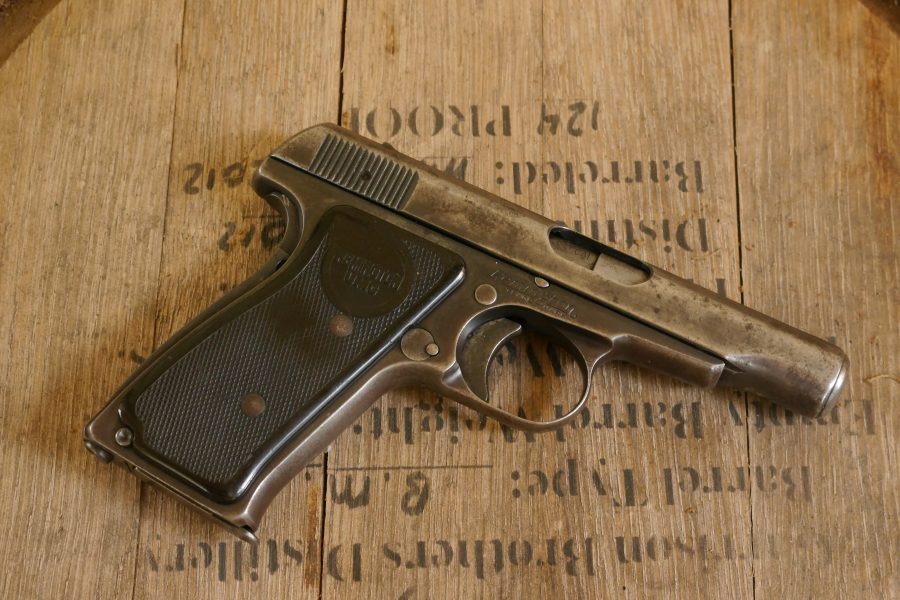
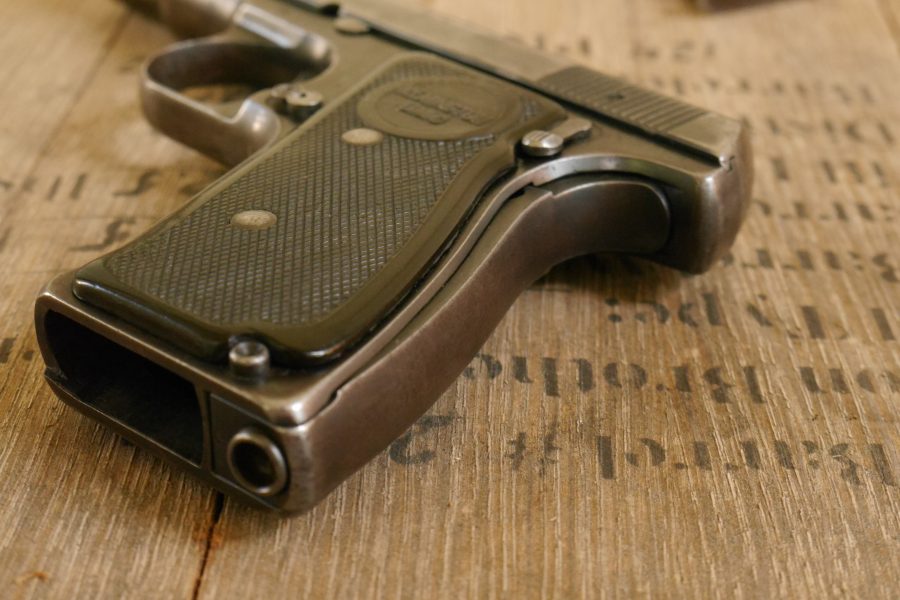

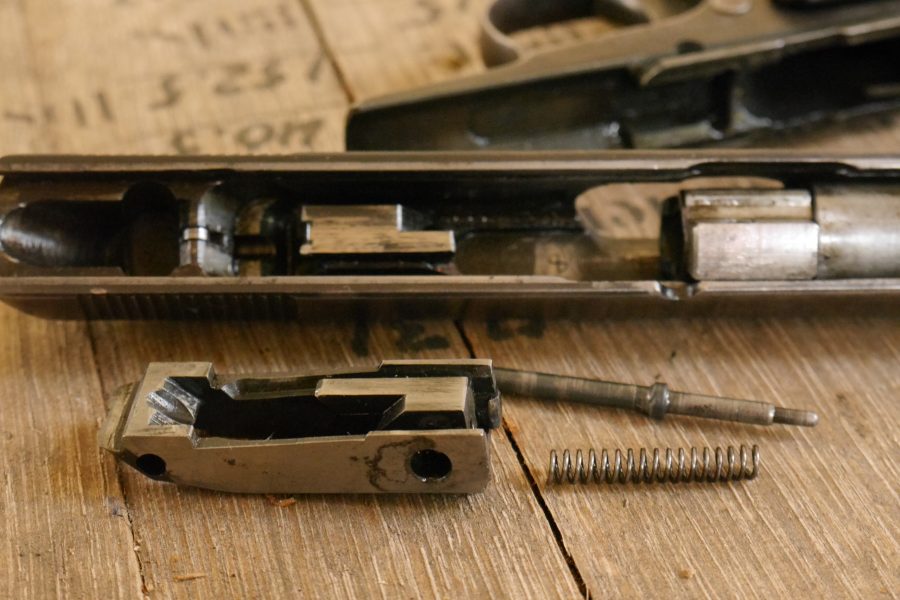

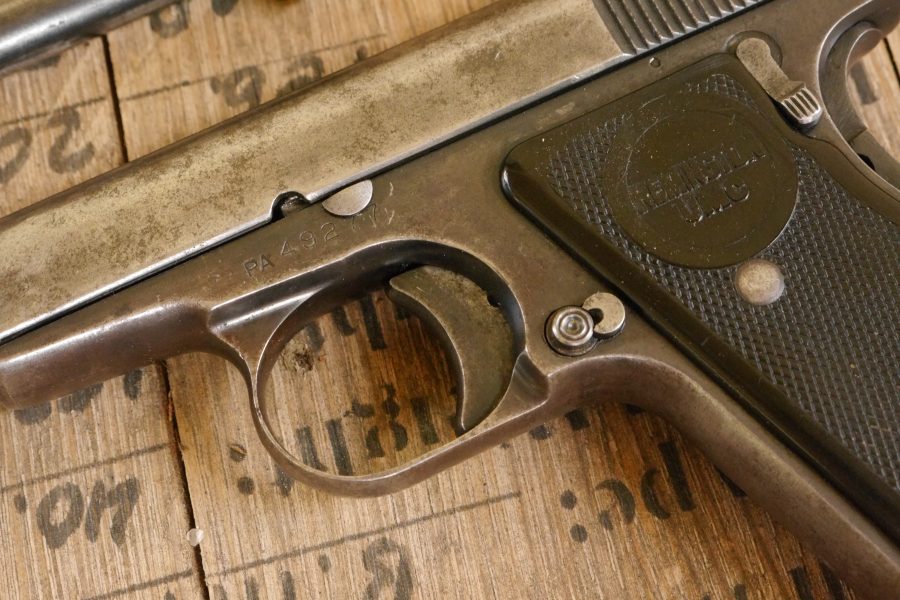
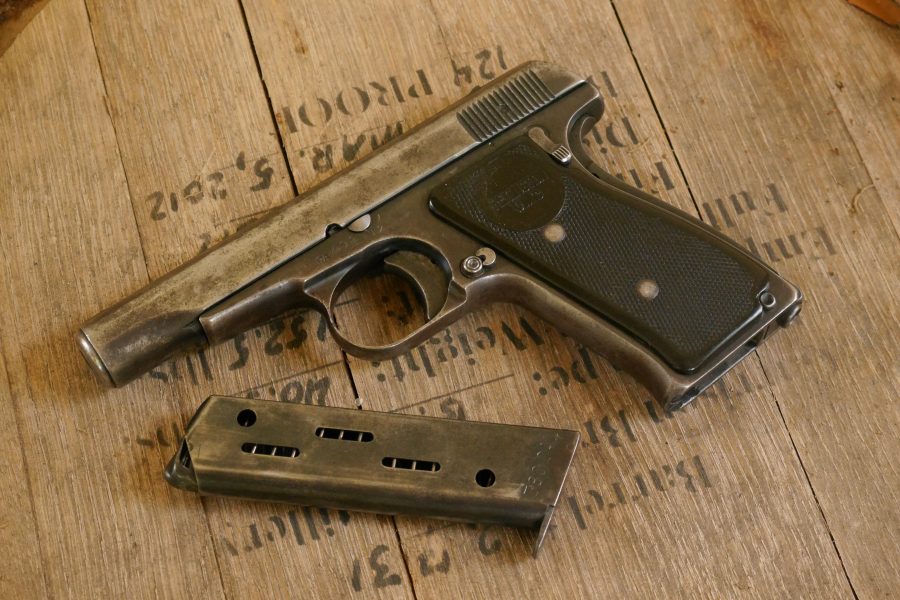



Such a cool piece of engineering. I can see why JMB thought so highly of Pederson.
I have two. Sadly, upon inspection, both were found to have major cracks in their locking blocks.
Which is why those were the only parts functionally redesigned in yhe R51.
A gun on my bucket list. I have 2 savage 1907s that need a friend. I hope parts are easier to find.
i have one if you’re interested in discussing it.
Sweet piece of nostalgia. Also on my “need to have if the price is right” list.
i have one if you’re interested in discussing it.
I have a 1932 (only 50 made on the time period encompassing this model) with the PA, UMC on grip, and the clip is stamped with the . 380. It if in immaculate condition. I saw one listed for 12,500 but going know if that had the anchor or the sun. Mine just the more common of the two, of course, the anchor. How could I get a true value on this weapon?
“Remington redesigned the firearm for the modern world and re-released it a couple years ago, with an updated model recently released. A review of that gun will follow soon.”
Lol, tragic lack of context or just a sense of humor dryer than any other?
A lie by omission is still a lie. If he was trying to be funny it was way too subtle for the Internet. This is supposed to be “The Truth About Guns” not a car magazine.
“The breech itself tilts to impart the momentum needed to carry the slide through the operating cycle.”
Before doing the R51 2.0 review, I’d consider some more education or study of the device’s function to avoid inaccurate sentences like this. The gap between locking lug and frame stop allows initial bolt setback, and this movement before rigid lockup imparts operating momentum to the slide. That the locking scheme resembles the FAL is secondary.
It looks remarkably like a hammerless Makarov. From that era I judge pocket pistols when compared to the Colt 1903/08.
It is svelte.
Neat pistol.
Never owned one but did own a Savage 380 from that era.
“More powerful .380 ACP.”
.380 ACP: 90 gr at 200 ft-lbf muzzle energy.
.32 ACP: 73 gr at 177 ft-lbf muzzle energy.
Yep, those 23 ft-lbf meant the difference between life and death.
Source:
https://wikipedia.org/wiki/.380_ACP
https://wikipedia.org/wiki/.32_ACP
He said more powerful, not most powerful.
At the time this gun was made .32 and .380 were considered acceptable military and police rounds.
The thing he wrote is demonstrably, entirely true.
The stats YOU POSTED bear that out. At any point, dunce, did he write that it was SO MUCH more powerful it makes all the difference?
This is why gun owners are called gun nuts. There’s always the one goof making the rest of us look as nuts as they are.
One of the classics, I would love to add this to my collection if I can find a descent one.
i have one if you’re interested in discussing it.
I bought mine from a Pawn Shop in 1964 while I was attending the Police academy. Because it was slim and lightweight, it became my off duty CCW. Because I did carry it that way, I had to qualify with it annually just as with my service revolver which was a S&W Mod. 19 .357. I cannot recall a single mis-feed or mis-fire in all these years.
The Remington Model 51 was sold in both .380 and .32 ACP, and therefor is one of the few “locked breech” .32 handguns designs. I have two, and they are an extremely interesting design. The hesitation lock is suitable (IMO) only for lower pressure cartridges as it allows the case to retract unsupported a short distance. Petersen molded every need for a small handgun into this one answer, and it’s a very good answer.
I purchased a Model 51, .380 in an auction for $200. All matching numbers, etc. after cleaning, and reassembly; I loaded the magazine to cycle a few rounds…. The round immediately stuck in the chamber. Found the Extractor was broken!
Searched the internet; found a replacement extractor ($40)… a bit steep – but a needed part. It took about 15-min to remove the broken part, and insert the new extractor. Quite a feat actually. 100% good to go now. Planning a range day next week. I love the feel of this pistol.
Please if there is someone out there that can direct me to a gunsmith or to the exact
instructions on how to install the magazine release on the original Model 51, picked up
one that was missing this part, otherwise it functions like a .380 is supposed to.
Thank you in advance for your help, I hope that someone can help me.
I was given an M51, type I, serial # PA12516, manufactured in 1919, from a friend’s estate recently. It was dirty and gunked up when I got it. Hadn’t seen any TLC in a long while. I squirted some C.L.P. on it and wiped it down, racked it a few times, and wiped it off. What a beauty that was hiding under the dirt and grime! It had 7 hollow points in the magazine when I got it, and reading some prior reviews made me suspect about firing them. However, when I took it to the range yesterday my concerns were put aside. This gem fires!! I put 182 rounds through it, including the original 7 hollow points and another 25 critical defense rounds with no problems whatsoever. I also have a S&W Bodyguard .380 and hands down the M51 is my preference for concealed carry. Now all I have to do is find a holster and I’m in business. I appreciate all of the comments of previous posters as it has been of great assistance to me. Thank you gentlemen.
Looking for an outside holster for this Model 51.
I have a well functioning M51 ! My fathers daily carry ! We head to the range with a 357 SnW 19 too and my guns I just keep loading for 20 minutes straight while pops shot them , I’ll treasure my M 51 the memories at the range with dad ! RIP 5/27/19 Korean Veteran Air Force .
I inherited a model 51. Unfortunately I somehow broke the breech block at the shooting range. I have had a lot of trouble finding a replacement part…anybody have suggestions?
Have you looked online at Numrich?, Popperts? JackFirst?
I last posted in June 2019 when I was given a Type 1, M51 which I have been using for my CCW and target range pistol. Really a sweet weapon and it got me interested in finding a Type 2 as a backup. I searched online auctions and local estate sales in the newspapers and was lucky enough to stumble across a nice one that I was able to pickup for $325. Additionally, I came by a breech bolt, firing pin and spring, and another original .380 magazine that I got from a gunsmith that was closing his shop a couple of towns over from us. Whole weapons and parts are out there and are tough to get; but, they are out there and you are rewarded when you find them. Another good place to look is around retirement communities and garage sales. Networking with friends and relatives also turns up interesting leads. I’ve talked to gunsmiths all over the country and heard some very interesting history and stories. Good luck and good hunting.
Got lucky and just picked up one of these beauties. I’m interested in old handguns as well and this is definitely a great example of early 1900 technology. Found a date of manufacture chart and if the information is correct, my handgun arrived in 1920, second year production. For replacement parts definitely check Numrich.
Hi,
I have the model 51 in .32 cal. and enjoy shooting this firearm. But one thing that I am unhappy with is the sluggish magazine release. I was told it was the magazine spring maybe week so I purchase a newer magazine and the same thing, not any better. Is there anything that can be done to enable a stronger magazine ejection ?
Thank You
Tom Marotta
Sorry to say, Mr. Marotta, but whomever told you that was speaking in generalities, and not specifically about the 51. These guns were designed to NOT have the mag fall free, but to pop out enough for it to be stripped from the pistol for retention. This was not an era of rapid mag changes, and that feature, like the magazine disconnect, was made for the “ordinary citizen”, to make operation safer and more convenient for the user. I have groused about it myself on occasion, but then I remember that I possess a true gem of a pocket pistol, and let it go….
If you love to wear polyester fabric jackets? so check Salt N Pepa Jacket which is a most selling outfit in our store, Shop now and get amazing discounts and offers.
Comments are closed.